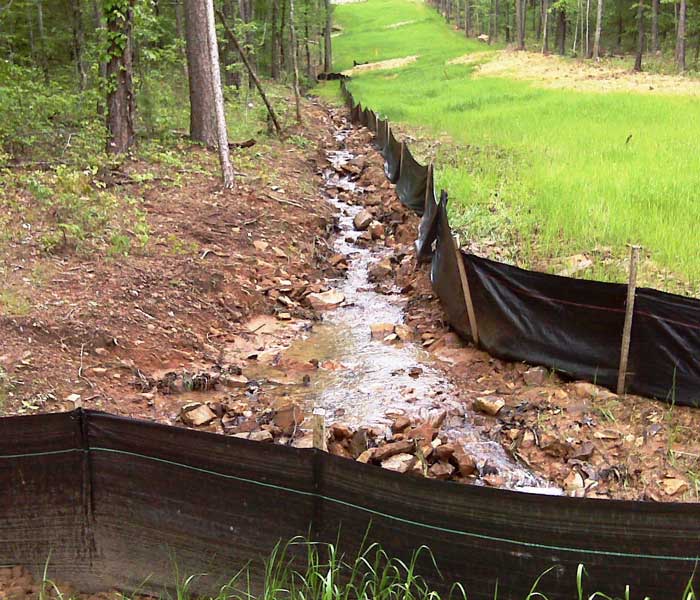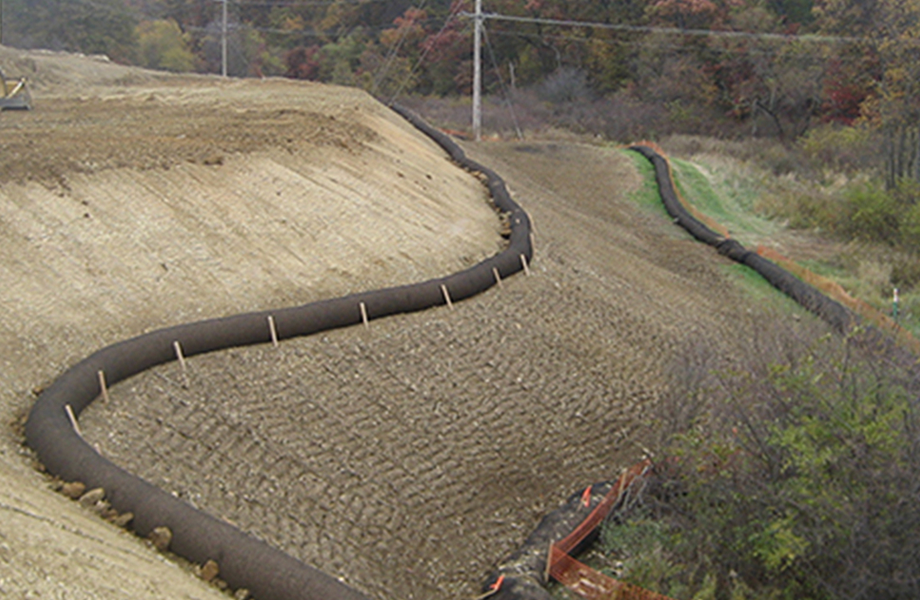Securing Your Site with Memphis Erosion Control Solutions silt fences
Wiki Article
Best Practices for Disintegration Control in Building Projects
Are you working on a construction job and concerned concerning disintegration control? Look no more! In this article, we will lead you with the most effective methods for protecting against disintegration on your site. You'll discover five crucial strategies, reliable debris and runoff monitoring methods, key factors to consider for incline stabilization, and tips for shielding plants and soil. We'll likewise look into the value of implementing correct drain systems. Prepare to take on erosion head-on and guarantee the success of your building and construction task.5 Necessary Erosion Control Strategies

To efficiently manage disintegration on your building site, you'll need to implement vital methods such as incline stabilization and debris control procedures. Slope stablizing is vital in stopping dirt erosion on high inclines. You can achieve this by utilizing approaches like terracing, which entails producing horizontal steps on the incline to decrease water circulation and promote the absorption of rain. One more efficient method is making use of erosion control coverings or floor coverings, which are positioned on the incline and help retain dirt particles while permitting vegetation to grow. Debris control steps are likewise crucial to avoid debris runoff into nearby water bodies. One effective method is the installation of silt fencings along the perimeter of the construction website. These fences function as barriers, capturing sediment-laden water and allowing it to settle prior to it gets to the water bodies. In addition, you can use sediment containers, which are temporary retention ponds created to catch debris and allow water to slowly drain pipes off. Carrying out these vital disintegration control strategies will aid decrease the adverse environmental effect of your building job and make certain compliance with laws.
Effective Debris and Overflow Management

You can effectively take care of sediment and overflow in your construction task by implementing proper erosion control procedures. Debris and drainage monitoring is crucial to stop erosion and safeguard the surrounding atmosphere. One reliable measure is the installment of silt fencings along the boundary of the building website. These fencings assist to include sediment and prevent it from going into neighboring water bodies. Another important method is the implementation of disintegration control blankets or mats. These coverings provide a protective layer on bare soil, reducing the effect of rainfall and avoiding disintegration. Furthermore, the use of sediment basins or debris catches can assist to record sediment and prevent it from getting in stormwater systems. Normal maintenance of these steps is important to guarantee their performance throughout the building and construction job. This includes cleaning up and evaluating sediment containers and regularly replacing silt fences and erosion control coverings as needed. By executing these erosion control steps, you can successfully manage debris and runoff in your construction job, lessening the influence on the environment and following regulatory requirements.
Secret Considerations for Incline Stablizing
You require to very carefully check out the slope's qualities, such as its angle, composition, and drainage patterns. Look for indications of erosion, such as exposed origins, fractures, or down dirt.As soon as you have recognized the unsteady locations, you can start carrying out actions to stabilize the incline. One common approach is making use of retaining wall surfaces or terracing to develop a collection of level steps, which can aid distribute the weight and avoid further disintegration. One more choice is to clean scapes landscaping plant plants on the incline, as the roots can aid secure the dirt and control erosion. In addition, installing disintegration control blankets or floor coverings can supply immediate security while plant life comes to be recognized.
It's critical to on a regular basis check the supported slopes to ensure their effectiveness. Keep an eye out for any type of signs of motion or disintegration, and take instant activity if required. Normal upkeep, such as checking and repairing any type of damaged procedures, is likewise vital to make certain long-term stability.
Best Practices for Plants and Soil Security
If required,One efficient method to secure vegetation and soil on slopes is by regularly inspecting for indications of disintegration and taking instant action. By being watchful and aggressive, you can prevent additional damages and guarantee the security of the incline. Beginning by inspecting the slope for any type of indications of disintegration, such as revealed origins, bare dirt spots, or debris build-up at the base. It is crucial to address the concern without delay if you see any of these indications. Implement disintegration control measures such as setting up disintegration control coverings, mulching, or also creating preserving wall surfaces if required. Furthermore, planting greenery can considerably assist in stabilizing the soil. Pick indigenous plants that have deep origin systems, as they are a lot more efficient in avoiding erosion. Make sure to frequently evaluate the health of the vegetation and give required maintenance, like watering and feeding. Bear in mind, erosion can quickly get worse and cause serious damages, so it's necessary to address it asap. By taking positive measures and regularly keeping an eye on the slope, you can protect the plant life and soil, ensuring the lasting stability of the location.Executing Correct Drainage Equipments
When it comes to managing water flow and stopping disintegration, comprehending these factors is important. Steeper slopes can lead to quicker water circulation, increasing the risk of erosion and flooding. On the other great post to read hand, gentler slopes allow water to move much more slowly, decreasing erosion potential.Dirt type also influences water drainage system layout. Different soil types have varying degrees of leaks in the structure, influencing exactly how water is taken in and drained pipes. As an example, sandy soils tend to drain faster as a result of their crude texture, while clay soils have a slower drainage price because of their small nature. Comprehending the soil kind assists in selecting ideal drain Source techniques, such as using absorptive materials or mounting French drains. In addition, taking into consideration the dirt qualities helps avoid waterlogging, which can lead to inadequate plant development and damage to frameworks.
Conclusion
In final thought, when it comes to erosion control in building jobs, you need to adhere to these best practices. Consider incline stablizing approaches to ensure the stability of the site. By following these vital methods, you can efficiently regulate disintegration and guarantee the success of your building project.To effectively manage erosion on your building and construction site, you'll require to carry out necessary methods such as slope stabilization and debris control actions. Incline stablizing is critical in protecting against dirt erosion on steep inclines. An additional reliable method is the use of disintegration control coverings or mats, which are placed on the slope and aid maintain soil fragments while enabling vegetation to grow. Another alternative is to plant vegetation on the incline, as the origins can aid secure the soil and control disintegration. Implement erosion control procedures such as setting up disintegration control coverings, mulching, or even creating maintaining walls if required.
Report this wiki page